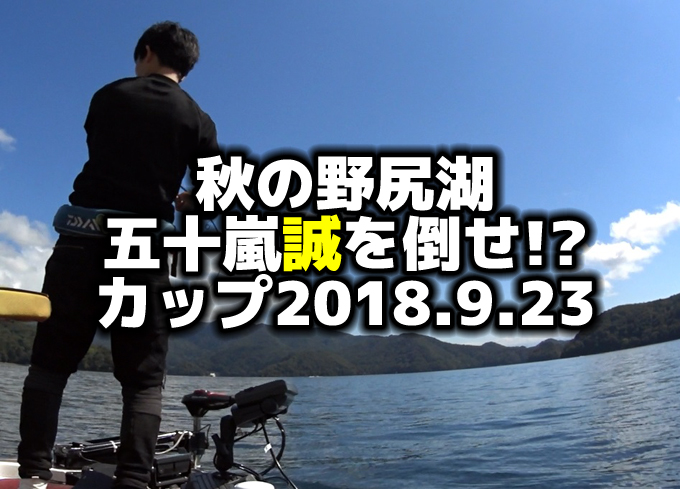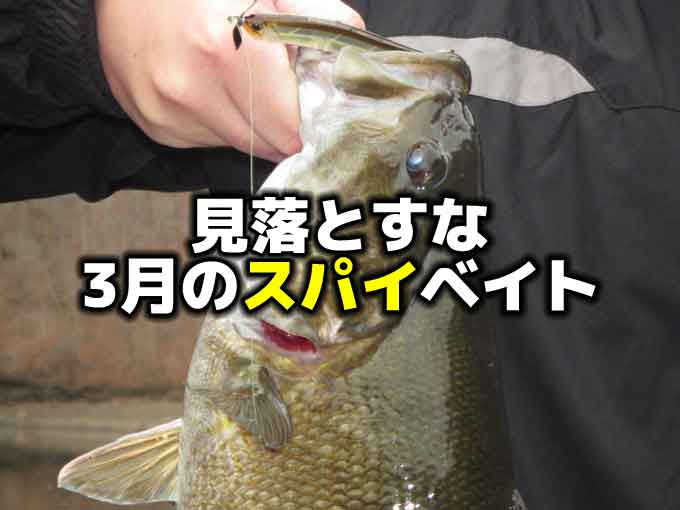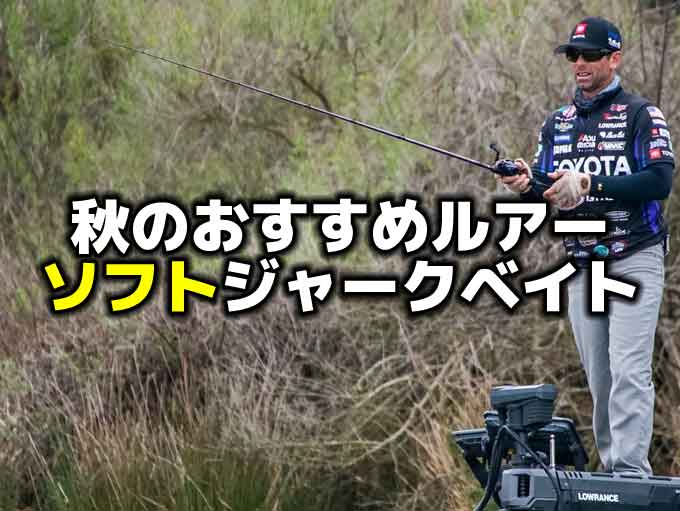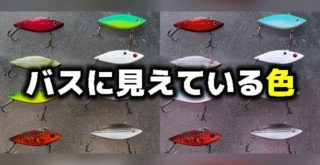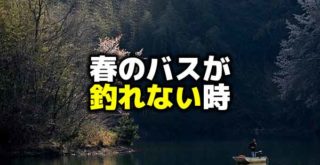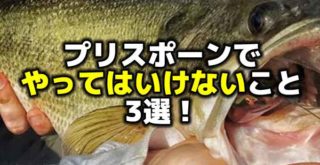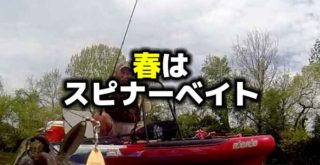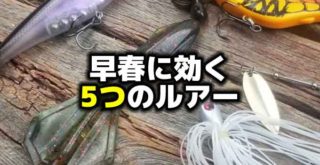バス釣りの基礎「水を読む」ということ

Photo by anglr.com
こんにちは!店長の小山です!
本日は海外サイトより、”Back to the Bass Fishing Basics: Read the Water”という記事を引用してご紹介いたします。
引用先:anglr.com”Back to the Bass Fishing Basics: Read the Water”Article by Bryan Rice, 08/09/2018(海外サイトです)
私の大好きな、最新型の魚探。
より鮮明な画質で美しく映し出すボトムの様子、一度通っただけで自動的に記録してくれるシステム、幅広いエリアを見渡せる機能…。これらの技術は、湖のことをよく知らないアングラーにもかなりの情報量を与えてくれ、その湖に長年にわたって通い詰めているロコアングラーさんとの差を大きく縮め、うまくすれば対等の釣果を得られるツールになっています。
最新の技術を使いこなす知識や理解度というものも必要ではあるものの、経験や時間というものを短縮できるテクノロジーを手に入れるということは単純にアングラーとしての喜びでありますし、使いこなすのがエキスパートであれば、その釣果は指数関数的に伸びていくのではないかと思わされます。
何より、私のようなアマチュアのサンデーアングラーにとっては、湖底の様子が画面に映し出されるのを見ているだけで胸が高まり、いつまでも見ていたくなってしまうものだったりします。
ただし、そのテクノロジーが飛躍的に進歩したのはここ数年、2014年ごろからでしょうか。
そのため、そういったハイテク機器の価格はまだ驚くほど高く、誰もが手にできるようなものではありません。
その代わり、私たちはインターネットで正確な湖の地形を手に入れられるようになったり、SNSではリアルタイムな釣果情報なども入手できるようになり、Youtubeを開けば、自分の部屋にいながらにしてプロのテクニックを動画で覚えることができるようになっています。
これもまた、現代のバスフィッシングの姿であって、ハイテク機器の恩恵とも言えますよね。
では、昔ながらのアングラーさん方は、どうやってバスフィッシングを上達していったのか。もっと言うと、どのようにして地形や各種データを把握し、釣りに活かしていたのか。
そういった経験や知識は、今や必要なくなってしまったのか。
この記事は、アメリカのルアーフィッシング用アプリ制作会社「ANGLER」のブログ記事で、ベテランアングラーのブライアン氏が、昔ながらのバスフィッシングにあった水を読む力の有効性やそのノウハウを解説し、共有してくれています。
ハイテク機器でも完全には読むことができないことはまだまだあります。どういうものか、ぜひ読んでみてください。
昔ながらのバスフィッシング
I had the great honor and privilege to have lived and fished in the time before cell phones and GPS. Lakes were learned and navigated by landmarks and a Lowrance depth flasher was all we had. The best computer on our boats was our brain. We took what we knew about the lake and tried to piece together the puzzle.
Water clarity was found out the day of the tournament when we looked at the lake as we dumped the boat in. Water temperature was guesstimated by sticking your hand in the water or there were a select few that had a sur-temp gauge that was mounted on their trolling motor. Water movement was gauged by looking at docks, pier or bridge pylons, and debris on the water.
Bait was found by watching for the flickering of shad, bream on the beds or around the bank, seeing a crayfish around the rip rap or watching the birds for feeding frenzies.
Cover for bass was looking for the older docks, lay downs, a tip of a tree limb sticking out of the water, and looking under docks for Christmas trees placed there by the owners. Then you could always look for a piece of PVC pipe marking a stump or a submerge brush pile. We would use a piece of surveyors ribbon tied to a limb and then use it as a reference point to locate humps, points and channel swings. Paper maps were good for learning the basic layout of the lake, but nowhere near the detail of today’s maps using modern sonar and satellites.
Seasonal patterns were learned by experience and by reading magazines like Bassmasters. By the time the printed articles came out, we were all on a different seasonal pattern. With time and practice, the articles and patterns caught up with each other.
私の人生に携帯電話やGPSが登場する前は、大きな名誉と特権を持っていました。湖では目印を覚えてナビゲートし、ローランスのデプスフラッシャーだけを持っていました。自分のボートに乗っている最高のコンピュータは、自分の頭脳でした。我々は湖について分かったことをつなぎ合わせ、パズルを解くことに必死でした。
水の透明度などは、トーナメント当日に我々がボートを浮かべて初めて知ることでした。水温は自分の手を水につけることによって推測し、エレキに水温計が付いている人などは少数派でした。水の動きを知るには、ドック、橋脚や橋梁、水面に浮かぶゴミを見て計っていました。
ベイトは、浅瀬やバンク周りでちらつくシャッドなどを探したり、リップラップの周りでザリガニを探したり、フィーディングを見つけるために鳥を探したりしていました。
バスのいるカバーは、古い桟橋、レイダウン、水の中から突き出ている立木の先端を探していて、土地の所有者が置いたクリスマスツリーを桟橋の下で探していました。また、塩ビパイプなどが突き立てられたところにはスタンプやオダを探すこともできました。測量に使われた目印のリボンを見て、それを基準点として使用してハンプ、岬やチャンネルのカーブを探しました。紙の地図は湖の基本レイアウトを学ぶのには良いものでしたが、現代のソナーや衛星を使った今日の詳細な地図などはどこにもありませんでした。
シーズナルパターンは経験やバスマスター誌などの雑誌を読むことで学びました。印刷された記事が出版される頃には、季節は変わってしまい、私たちは皆、季節に応じたパターンはできませんでした。時間と練習を重ねることで、記事とパターンを合致させることができました。
古いやり方を理解することとは
By looking at all of the ways that us older fishermen used to locate fish, there are some key points that the new age bass fishermen should pick up on! Many of these patterns and techniques can still be applied today and it might be just what you need to get that competitive advantage!
Always be thinking about how the fish stage at certain times of the year, don’t solely rely on those electronics, they might be your downfall if you lean to hard on them. Always consider lake conditions and any other variables that you may be faced with when out on the water.
昔ながらのアングラーが魚を見つけるのに使った方法を見ることで、若い世代のアングラーでもいくつかのキーポイントを得ることはできます! これらのパターンとテクニックの多くは、今日でも適用可能であり、トーナメントなどでもその優位性を得るために必要なものかもしれません。
魚が一年を通してどのような段階にあるのかを、いつもエレクトロニクスに頼るのはやめてください。それに頼りすぎると没落してしまうかもしれません。 湖の状態や、水面に出たときに直面するであろう他の変数を常に考慮してください。
まずはバスについて考える
キャストする出る前にできること
As I stated before, anglers who fished prior to all the great tools we have now had a lot to consider before making the first cast. It sounds so simple now, but back then, it was overwhelming at times. We had to do all of our lure preparation at the lake upon finally seeing the water.
Many times phone calls from friends who had been on the lake the day or week before was the best source to obtain lake conditions and lure choices. Google and YouTube didn’t exist, so there wasn’t many ways to research those bodies of water and the bass that reside there.
先に挙げたように、私たちが今、持っているすばらしいツールが出る前のアングラーは、最初のキャストを行う前に多くのことを考えなければなりませんでした。 今となってはとてもシンプルに聞こえますが、当時はそれが絶対でした。 私たちは最終的に水を見てから、湖ですべてのルアーの準備をしなければなりませんでした。
数日前または1週間前に湖に行った友人からの電話が、湖のコンディションやルアー選択を決めるための最良の情報源でした。 グーグルやユーチューブは存在しなかったので、フィールドの研究やバスの傾向を知る方法はあまりありませんでした。
バスに影響を与えるもの
The bass is a complicated yet simple being. They are driven by two things, food and cover, unless it is spawning season, all a bass will think of is its next meal and where to hide to ambush it.
Most times, a bass faces into the current when thinking of food and ambush areas. Current will help drive bait to the ambush points. With the introduction of Blue Back Herring into certain lakes, those bass have adapted to a roaming style, following the Herring. Yet, they still use points, breaks, drops, open water brush piles and other objects to set up ambush points as the Herring roam.
This again, takes us back to food and cover. Deep or shallow, food and cover will always be the focus of a bass. Knowing this helps you put together a general pattern before you even start your fishing trip.
バスとはシンプルであり複雑なものです。 彼らは、スポーニング期以外は、食べ物とカバーの2つの要素によって動かされます。バスの考えることはすべて次に何を食べるかと、それを待ち伏せするための場所です。
ほとんどの場合、食べ物や待ち伏せのエリアを考えるとき、バスは流れに向かいます。 流れは、待ち伏せ地点に餌を運んでくれます。 Blue Back Herring(淡水ニシン)が特定の湖に放流されたことで、バスはベイトフィッシュを追う回遊スタイルになっていきました。 しかし、彼らは依然として岬、ブレイク、ドロップ、オープンウォーターのオダ、その他のものを利用して、ベイトフィッシュの回遊に合わせた待ち伏せ場所を決めていきます。
ということでやはり、私たちは食べ物とカバーに戻ります。ディープでもシャローでも、食べ物とカバーは常にバスの焦点になります。 これを知ることで、釣りに行く前に大雑把なパターンをまとめることができます。
水を読み、湖のコンディションを良く考える
Today, we have weather stations and the internet to monitor lakes and rivers throughout the world. Before the internet, lake conditions were learned and monitored on the water. The simple way I learned and I still use this today, is first I look at the shore to see the water line stain. To determine if the water is rising or falling I look at debris on the water. If leaves, sticks, garbage, floating logs and other items are moving away from the shore, even in small pockets, the water is falling. If such items are pushing up against the bank, the water is rising.
To determine how fast the water may be moving, I look at permanent items in the water such a piers, channel markers, docks and even lay downs. Sometimes you can see water flowing around these, showing that the water is really moving. It can be easiest to see on the main channel of that body of water.
Bass will be on the inside of cover with rising water, and on the outside of cover or at the nearest drop off if the water is falling. These moves are again, relevant to bait moving on the rise and fall of the water levels. Bait need to feed as well and their forage is almost always moving with the current. So, bait will follow the current which causes the bass to feed off of the current breaks where the bait get pushed to.
今日では、世界中の湖や川をモニターするライブカメラとインターネットがあります。インターネットの前で、湖の状態を学び、水面をモニタリングできますが、私が学んだシンプルな方法は今でもまだ使用しています。まず、水の汚れを見るためにはショアラインを見ます。水位が上昇しているのか落ちているのかを判断するためには、私は水辺のゴミを見ます。小さなコンビニ袋でも、葉っぱ、棒きれ、ゴミなど、浮遊物が岸から離れている場合、水位は落ちています。もしそのような物がバンクに押し付けられていれば、水位は上昇しているのです。
水がどのくらいの速さで動いているかを調べるためには、動かないもの、例えば橋脚、桟橋、チャンネルマーカー、ドックなどを見ます。このとき、水がこれらのまわりを流れるのを見て、水がどれくらい動いているかを感じることができます。そのフィールドのメインチャンネルで見るのが最も簡単かもしれません。
バスは水位が上がっているならカバーのインサイド(岸側)に、水位が落ちているならカバーの外側またはカバー近くのドロップオフにいます。これらの動きは繰り返され、水位の上昇と下降にともなって動く餌に関係しています。ベイトもまた同様に餌を必要としており、その食料は常に流れと一緒に動いています。ですので、ベイトは流れや水の動きを追い、その結果、バスは流れを遮るもの(カレントブレイク)に入り込みフィーディングします。
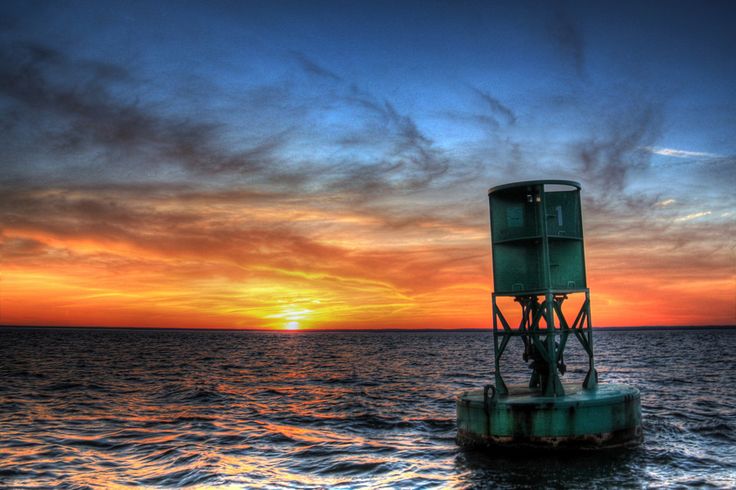
Photo by anglr.com
常に変化している
Bass fishing, back then and right now is so packed full of variables that we as anglers cannot always button down exactly what the fish are doing. As we continue with the rest of our coverage on “Back to the Basics of Bass Fishing”, some of these variables will be covered. Lure selection, line selection, time of year or seasonal patterns, the spawn, water temperature, fronts, moon phase, and many more. All will be speaking on the simplest and basic terms.
If we stop and take a minute to consider how the fish may react, what the bass may be reacting to, and why the bass would react it’s a little easier to break down the pattern. Focusing on the root of their species, food and cover, we can reach a better understanding of the simple yet complicated life of a bass. Then using these “old style” techniques paired with our 21st century hardware we can more effectively dial them in.
バスフィッシングは、昔も今も、魚のことをアングラーが正確に把握することができないほどの変数でいっぱいです。 ここで「バスフィッシングの基本に帰る」といっても、これらはその変数の一部にすぎません。 ルアー選択、ライン選択、シーズナルパターン、スポーニング、水温、寒波、月齢など。 すべてがシンプルで基本的な言葉で話すことができます。
私たちがちょっとだけ手を止めて、魚がどのように反応するか、バスが何に反応しているのか、そしてなぜバスが反応するのかを考えてみると、より簡単にパターンを分析できると思います。 スモールかラージか、食べ物、カバーに焦点を当てることで、シンプルで複雑なバスの生活をより深く理解することができます。 それができたら、21世紀の最新型ハードウェアとこれらの「古いスタイル」のテクニックを組み合わせて使用することで、より効果的にアジャストすることができるのです。
古くからのバスフィッシングスタイル、いかがでしたでしょうか。
こんなのはほんの一部だと思います。現代のハイテク機器がなかったころはもっともっと、他人に教えたくないやりかた、自分だけのやり方のようなものがあったのではないかと思います。
私の中にも、少なからずあるんです。例えば、「このポイントは北風の時でないと釣れない」とか、「このポイントが釣れるのは7月まで」といった情報です。こういった情報は、当然、どんなハイテク魚探であっても映し出すことができない情報です。
こんな私ですら、そういった特定の情報を持っているのですから、昔からフィールドに通い詰めているベテランアングラーさんに敵うわけがありません。そしてその差が、私にとっては最高に楽しいバスフィッシングの一部だったりします。
私が持っているそういった些細な情報を出すことで、ベテランアングラーさんが持っている別の情報と交換することができるのです。ギブアンドテイクというやつですが、私が提供できる情報がなければ、当然、それに見合った情報をいただくこともできません。
逆に言えば、私がそういう「気付き」を貯めていくことで、もっといい情報をいただくこともあり、それが自分の釣りをまた一歩上達させることができると言った具合です。
若い世代のアングラーさんは最新機器への理解度も早く、成長も早いのですが、それだけでなく、機械ではなかなか測ることのできないものもよく観察してみてください。
そしてベテランアングラーさんとも交流してみてください。驚くべき情報で自分のことをもっと成長させてくれるかもしれませんよ。
ベテランアングラーさんは、最新のテクノロジーを恐れず、受け入れることでご自身の持っている知識や経験をより活用することができるのではないかと思います。最新テクノロジーの扱い方は、若いアングラーさんに聞いてみてもいいかもしれませんね。
バスフィッシングはこれまで、ものすごく進化をしてきました。これからもその進化は止まらないと思います。
これから先、どんな釣りができるようになるのか、私は楽しみにしています。
それでは、また。
毎度ありがとうございます!





